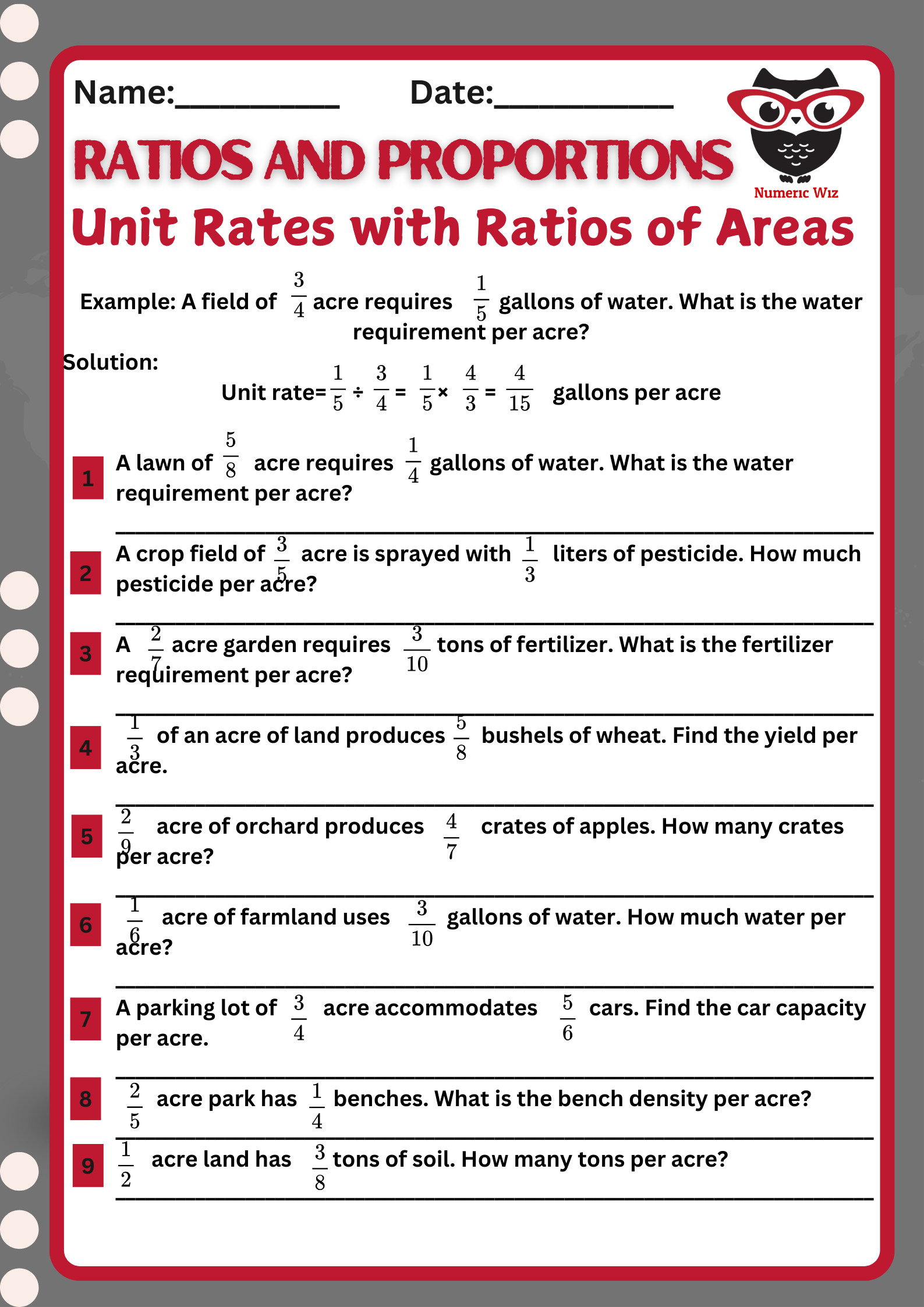
When working with ratios of areas, unit rates help us determine how much one unit of area corresponds to another. This concept is essential in construction, agriculture, real estate, and even design, where we need to compare areas efficiently.
For example, imagine two farms:
Farm A has 3/4 acres of land producing 5/6 tons of wheat
Farm B has 2/5 acres producing 1/2 ton
To find how much wheat is produced per acre, we divide the total yield by the total land area for each farm.
Farm A’s Unit Rate (Yield per Acre):
5/6 ÷ 3/4 = 5/6 × 4/3
= 20/18 = 10/9 tons per acre
Farm B’s Unit Rate (Yield per Acre):
1/2 ÷ 2/5 = 1/2 × 5/2 = 5/4 tons per acre
Now, we can compare the farms! Since 10/9 ≈ 1.11 and 5/4 = 1.25, Farm B produces slightly more wheat per acre.
 Farming & Agriculture: Yield per acre, crop density, or grazing land per animal.
Farming & Agriculture: Yield per acre, crop density, or grazing land per animal.
 Real Estate & Construction: Price per square foot of land, efficiency of space usage.
Real Estate & Construction: Price per square foot of land, efficiency of space usage.

Manufacturing & Design: Material efficiency, fabric per square meter, or paint coverage.

Set up the ratio of two areas or related quantities (e.g., cost per square foot, yield per acre).
Divide the first fraction by the second (by multiplying by the reciprocal).
Simplify the result to understand the unit rate in its simplest form.
Lets Explore our knowledge with the help of designed worksheets at NumericWiz.
For a limited time
